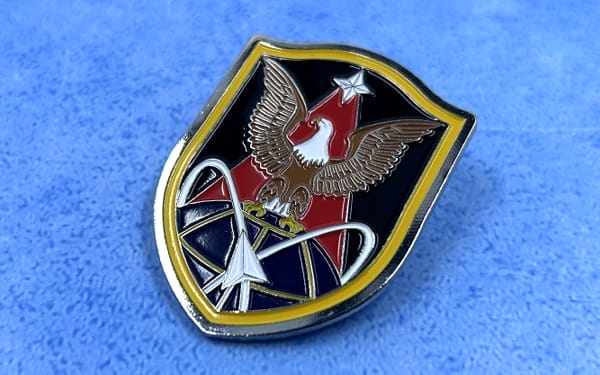A Step-by-Step Guide to Removing Iron-On PatchesHow to Remove Iron-On Patches

Iron-On patches are a wonderful way to support your favorite passions and projects, and they’re made to last. But unfortunately your tastes themselves may not last, or certain passions don’t always age well upon reflection. So what do you do when you have a quality jacket and just want to remove the iron-on patch instead?

What You’ll Need
In order to properly remove custom iron-on patches, you’ll need the right equipment. Below are the items that we recommend you have before starting the process:
- Iron
- Ironing Board or a hard surface and towel
- Wax Paper
- Scissors and/or tweezers
- Fabric-safe adhesive remover
- Cloth
- A small brush
Removal Methods for Iron-On Patches
Hot Iron Method
Just as you can heat up the iron-on backing to place a patch onto fabric, you can use an iron to remove the patch instead.
- Prepare your iron and ironing board. If you don’t have a board, use the towel on your hard surface instead.
- Turn your iron on to the appropriate temperature for your fabric or apparel.
- Take a piece of cloth or wax paper and place it on your fabric, preferably somewhere it won’t be seen.
- Test your iron on your fabric by placing the iron on the wax paper or cloth. Hold for 15 seconds.
- Remove the iron and double check your fabric for burns.
- If your fabric is burned, use the adhesive method instead. If not, continue forward with your patch.
- Cover the patch with your wax paper or cloth. If using wax paper use a new sheet to be safe.
- Press the patch with your hot iron for 15 seconds.
- Lift the wax paper or cloth from your patch.
- Test the patch with a small tug from your tweezers.
- If the adhesive isn’t loosened, reapply heat with your iron for another few seconds. Continue to test the patch after this until it’s loose.
- Once it’s loose, use your tweezers to lift and pull the patch off.
Adhesive Removal Method
If the iron isn’t right for your fabric, you can instead choose to use a fabric-safe adhesive remover. Please note that this is for removing the glue that solidifies after being ironed on, NOT the adhesive “sticky” backing that we use to apply patches prepping for direct sewing. Making sure you get the right remover is essential to this process.
- Before using the remover, apply a small amount of it to scrap fabric. If the remover changes the fabric’s color, use a different method.
- Take the fabric that you are planning to remove the patch from and find a spot that won’t be seen.
- Test the adhesive removal and this segment as well. This makes sure you’re ready to go.
- Once everything works, turn your fabric inside out.
- Over a sink, spray or pour the adhesive remover on the segment of the fabric where your patch is sitting.
- Rub the remover into the fabric gently with your finger.
- Leave the remover for one minute.
- Flip the fabric back over and test to see if the patch will move.
- If only a segment is moved, remove that segment with the scissors or small brush.
- Repeat this process until the patch is fully removed.
Is Removing Iron-On Patches Easy?

Using the proper technique, they can be easily moved from one piece of fabric to another. But that is of course if you follow the steps as written. If you’re not careful enough, removing patches can quickly devolve into an expensive problem. As an example, the hot-iron method can be slightly quicker but is more dangerous if you’re not as experienced with heat. We also tend to push people away from this method if you are planning on making iron-on patches with PVC or Leather. These are more sensitive to heat, and have the possibility of melting if you’re not careful!
Have Any Questions?
We are always ready to help you with any questions involving your custom iron-on patches. You can either contact us by phone or send us the request form.
Custom Product Creation Expert
It is a long established fact that a reader will be distracted by the readable content of a page when looking at its layout.



